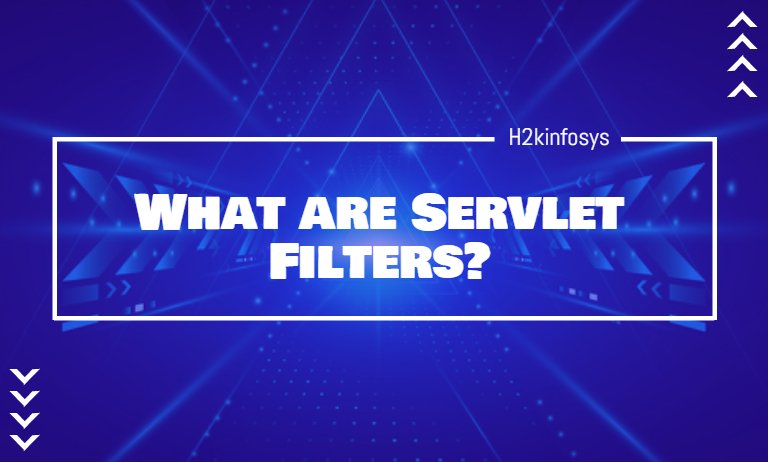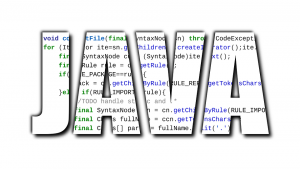Introduction:
Imagine you’re building a web application using Java, and you want to implement an additional layer of functionality across multiple servlets—without modifying the servlets themselves. Whether you’re looking to log requests, check user authentication, or apply transformations to responses, a solution that is reusable and does not require major changes in your code is essential. This is where Servlet Filters come into play.
In this article, we’ll explore what servlet filters are, how they work, and their practical applications in Java web development. By the end, you’ll have a better understanding of this concept and how it fits into your Java programming journey.
Understanding Servlet Filters: A Primer
Servlet filters are Java components that allow you to preprocess or postprocess requests and responses in a web application. In simpler terms, filters sit between the client’s request and the servlet’s response. They are part of the Servlet API and are primarily used for tasks like logging, authentication, input validation, or modifying the request and response objects.
To put it another way: think of a servlet filter as a gatekeeper that inspects data before it reaches the servlet or after the servlet processes it.
How Servlet Filters Work in Java Web Applications
In a Java web application, a filter is mapped to a specific URL pattern or a servlet. When a client makes a request, the filter intercepts the request before it reaches the servlet. After the servlet processes the request, the filter can also intercept the response before it is sent back to the client.
Basic Servlet Filter Flow:
- Request Interception: A filter inspects the request before it reaches the target servlet.
- Request Modification: The filter can modify the request (for example, adding headers or logging details).
- Servlet Execution: The servlet executes the business logic and generates a response.
- Response Interception: After the servlet sends the response, the filter can modify the response (such as compressing the data or adding custom headers).
- Response Sent to Client: Finally, the modified response is sent to the client.
Filters in Java programming are defined using the Filter interface, which contains two important methods:
doFilter(): This method is called to perform the filtering task.init()anddestroy(): These methods handle the initialization and destruction of the filter.
Let’s dive into an example of a simple filter implementation in Java.
Example of a Simple Logging Filter in Java
Let’s say you want to log every incoming request to your servlet. You can create a logging filter as follows:
import javax.servlet.*;
import javax.servlet.http.*;
import java.io.IOException;
public class LoggingFilter implements Filter {
public void init(FilterConfig filterConfig) throws ServletException {
// Initialization code
}
public void doFilter(ServletRequest request, ServletResponse response, FilterChain chain)
throws IOException, ServletException {
// Log request information
System.out.println("Request received at " + System.currentTimeMillis());
// Pass the request along the filter chain
chain.doFilter(request, response);
}
public void destroy() {
// Cleanup code
}
}In this example, every time a request comes through, the filter logs the current time. Then it passes the request along the chain to the next filter or servlet.
Types of Filters in Java Web Applications
There are various types of filters, each serving a different purpose in your Java web application.
1. Authentication Filters
These filters check if a user is authenticated before processing the request. They can be used to enforce security policies.
Example: Checking if the user has a valid session token before granting access to a specific resource.
2. Logging Filters
Logging filters are used for auditing and debugging purposes. They can log every incoming and outgoing request and response for tracking application activity.
Example: Recording the method type (GET/POST) and the URL requested by the client.
3. Compression Filters
Compression filters are used to compress the response content before it is sent to the client, thereby reducing bandwidth usage.
Example: GZIP compression to reduce the size of large HTML, CSS, or JavaScript files.
4. Encoding Filters
These filters can set or check the character encoding of a request or response.
Example: Ensuring that all requests are received in UTF-8 encoding.
5. Request Modification Filters
Some filters are used to modify the request before it reaches the servlet.
Example: Adding headers or parameters to the request.
6. Response Modification Filters
Similar to request modification filters, but these filters are used to modify the response before it is sent to the client.
Example: Modifying the response content or headers, such as adding security headers.
Real-World Use Cases for Servlet Filters
- Logging and Monitoring: Filters can log information such as request parameters, request time, response time, and more. This can be essential for troubleshooting and monitoring your application.
- Authentication and Authorization: Filters can be used to check whether a user has the necessary permissions or authentication to access a particular resource.
- Cross-Cutting Concerns: Things like compression, encryption, and content transformations (e.g., image resizing or response formatting) can be handled by filters, ensuring that your servlet code is cleaner and focused on its core task.
- Security Enhancements: Filters can be used to add security features such as cross-site scripting (XSS) prevention, ensuring that incoming data is sanitized and safe for further processing.
Advantages of Using Servlet Filters
- Separation of Concerns: Filters allow developers to separate cross-cutting concerns (like logging, authentication, and encryption) from business logic, making your code cleaner and easier to maintain.
- Reusability: Since filters can be configured to apply to multiple servlets or URL patterns, they are highly reusable across different parts of the application.
- Performance: Filters can optimize performance by adding functionalities like caching, content compression, and handling request/response transformations efficiently.
- Flexibility: Filters provide flexibility, allowing you to chain multiple filters for a variety of use cases, giving you more control over how requests and responses are handled.
How Servlet Filters Relate to Java Learning Online
If you’re pursuing Java certification or taking online courses in Java, understanding servlet filters is crucial for mastering Java web development. As you learn to build web applications, filters are one of the core concepts that help you manage HTTP requests and responses effectively.
By taking the java online training available at H2K Infosys, you’ll gain hands-on experience working with servlet filters. You’ll also learn how to design applications that are both robust and efficient by leveraging filters for tasks like logging, authentication, and security.
Step-by-Step Guide to Creating a Servlet Filter in Java
Let’s walk through creating a simple authentication filter that checks if the user is logged in before proceeding with a request.
Step 1: Create the Filter Class
import javax.servlet.*;
import javax.servlet.http.*;
import java.io.IOException;
public class AuthenticationFilter implements Filter {
public void init(FilterConfig filterConfig) throws ServletException {
// Initialization code
}
public void doFilter(ServletRequest request, ServletResponse response, FilterChain chain)
throws IOException, ServletException {
HttpServletRequest httpRequest = (HttpServletRequest) request;
// Check if user is logged in
if (httpRequest.getSession().getAttribute("user") == null) {
// Redirect to login page if not authenticated
((HttpServletResponse) response).sendRedirect("/login.jsp");
} else {
// Allow the request to pass through
chain.doFilter(request, response);
}
}
public void destroy() {
// Cleanup code
}
}Step 2: Configure the Filter in web.xml
<filter>
<filter-name>AuthenticationFilter</filter-name>
<filter-class>com.example.AuthenticationFilter</filter-class>
</filter>
<filter-mapping>
<filter-name>AuthenticationFilter</filter-name>
<url-pattern>/secure/*</url-pattern>
</filter-mapping>Step 3: Test the Filter
Now, any request to URLs under /secure/* will go through the AuthenticationFilter. If the user is not authenticated, they will be redirected to the login page.
Step 4: Handle Filter Initialization and Cleanup
Filters have init() and destroy() methods that allow you to perform initialization and cleanup tasks. These methods are called when the filter is loaded and unloaded, respectively.
- The
init()method is where you can set up resources, like database connections or configuration settings. - The
destroy()method is where you can release resources, like closing database connections or cleaning up temporary data.
Example:
public void init(FilterConfig filterConfig) throws ServletException {
// Initialization: Load configuration or initialize resources
System.out.println("Filter initialized with config: " + filterConfig.getInitParameter("configParam"));
}
public void destroy() {
// Cleanup: Release resources
System.out.println("Cleaning up resources before filter destruction");
}Step 5: Handle Exceptions and Error Logging
Filters are also useful for handling exceptions and providing custom error messages. You can catch exceptions, log them, and send custom error responses to the client.
Example: Error Handling Filter:
public void doFilter(ServletRequest request, ServletResponse response, FilterChain chain)
throws IOException, ServletException {
try {
// Proceed to the next filter or servlet
chain.doFilter(request, response);
} catch (Exception e) {
// Log the error
System.out.println("An error occurred: " + e.getMessage());
// Send custom error message
((HttpServletResponse) response).sendError(HttpServletResponse.SC_INTERNAL_SERVER_ERROR, "Something went wrong!");
}
}Step 6: Fine-Tuning Filter Performance
Filters should be optimized for performance, as they can potentially slow down your application if not properly managed. Some ways to improve filter performance include:
- Minimizing Processing Time: Keep the logic in filters as lightweight as possible.
- Avoiding Unnecessary Filters: Only apply filters where needed. Applying them globally can negatively impact performance.
- Caching: Cache results of common filter tasks (like authentication) to reduce processing overhead.
Step 7: Validate Filter Configuration
Finally, verify that your filter works as expected:
- Test it across different servlets and URL patterns.
- Use tools like Postman or a web browser to ensure the filter is applied correctly.
Methods in Servlet Filter
- public void init(FilterConfig config): This method is used to initialize the filter, and this method is invoked only once in the lifecycle of Servlet.
- public void doFilter(HttpServletRequest request, HttpServletResponse response, FilterChain chain): This function is used to perform filtering tasks and is invoked whenever a request is made. It is also used to call the next filter available in the chain.
- public void destroy(): This method is also invoked only once when the service of the filter is complete, and we want to close all the resources used by the Servlet Filters.
How to declare a Servlet Filter in web.xml file:
<filter>
<filter-name>RequestLoggingFilter</filter-name> <!-- mandatory -->
<filter-class>com.journaldev.servlet.filters.RequestLoggingFilter</filter-class> <!-- mandatory -->
<init-param> <!-- optional -->
<param-name>test</param-name>
<param-value>testValue</param-value>
</init-param>
</filter>
How to map a Filter to the Servlet Classes:
<filter-mapping>
<filter-name>RequestLoggingFilter</filter-name> <!-- mandatory -->
<url-pattern>/*</url-pattern> <!-- either url-pattern or servlet-name is mandatory -->
<servlet-name>LoginServlet</servlet-name>
<dispatcher>REQUEST</dispatcher>
</filter-mapping>
Given Below is the example of Servlet Filter implementation:
import javax.servlet.*;
import java.io.IOException;
public class SimpleServletFilter implements Filter {
public void init(FilterConfig filterConfig) throws ServletException {
}
public void doFilter(ServletRequest request, ServletResponse response,
FilterChain filterChain)
throws IOException, ServletException {
}
public void destroy() {
}
}Example of Servlet Filter:
import java.io.*;
import javax.servlet.*;
import javax.servlet.http.*;
import java.util.*;
public class LogFilter implements Filter {
public void init(FilterConfig config) throws ServletException {
String testParam = config.getInitParameter("test-param");
System.out.println("Test Param: " + testParam);
}
public void doFilter(ServletRequest request, ServletResponse response,
FilterChain chain) throws java.io.IOException, ServletException {
String ipAddress = request.getRemoteAddr();
System.out.println("IP "+ ipAddress + ", Time " + new Date().toString());
chain.doFilter(request,response);
}
public void destroy( ) {
}
}Using Multiple Filters:
<filter>
<filter-name>LogFilter</filter-name>
<filter-class>LogFilter</filter-class>
<init-param>
<param-name>test-param</param-name>
<param-value>Initialization Paramter</param-value>
</init-param>
</filter>
<filter>
<filter-name>AuthenFilter</filter-name>
<filter-class>AuthenFilter</filter-class>
<init-param>
<param-name>test-param</param-name>
<param-value>Initialization Paramter</param-value>
</init-param>
</filter>
<filter-mapping>
<filter-name>LogFilter</filter-name>
<url-pattern>/*</url-pattern>
</filter-mapping>
<filter-mapping>
<filter-name>AuthenFilter</filter-name>
<url-pattern>/*</url-pattern>
</filter-mapping>
Key Takeaways:
- Servlet filters intercept and modify requests and responses in Java web applications.
- Filters are used for various purposes like logging, authentication, compression, and more.
- Understanding filters is essential for any Java developer looking to master web programming.
Ready to take your Java programming Language skills to the next level? Enroll today at H2K Infosys and start your journey toward mastering Java development!
Conclusion: Unlock Your Java Development Potential
Servlet filters are a vital part of Java web application development, providing reusable functionality and separation of concerns. By understanding and utilizing filters, you can create more efficient, secure, and maintainable applications. Whether you’re looking to deepen your knowledge of Java or prepare for a Java certification exam, servlet filters are an essential concept to master.
To continue your Java learning online, consider enrolling in hands-on courses at H2K Infosys. Our courses are designed to equip you with the skills needed to thrive in real-world Java programming.


























